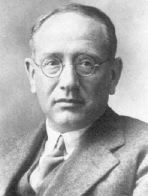

George Pólya enrolled at the University of Budapest to study law but found it boring. He then studied languages and literature. In order to understand philosophy, he studied mathematics. He was awarded a doctorate from Budapest in mathematics in 1912.
He spent 1913 in Göttingen where he met Hilbert, Weyl and others. In 1914 he went to Zürich to an appointment arranged by Hurwitz. He spent 1924 in England working with Hardy and Littlewood, and their joint work Inequalities was published in 1934.
While in Zürich his output of mathematics was very large and wide ranging. In 1918 he published papers on series, number theory, combinatorics and voting
systems. The following year in addition to papers in these topics he published on astronomy, probability. While he was doing this wide range of work he was
working on some of his deepest results in the study of integral functions.
The political situation in Europe forced Pólya to move to the United States, where after working at Brown University for 2 years, he took up an appointment at Stanford.
Before going to the United States, Pólya had a draft of a book How to solve it written in German. He had to try four publishers before finding one to publish the English version in the United Staes. It has since sold over a million copies. In it, he gives wise advice "If you cannot solve a problem, then there is an easier problem you cannot solve: find it".
In probability, Pólya looked at the Fourier transform of a distribution and proved a celebrated theorem on random walks. Pólya's interest in complex analysis, conformal mappings and potential theory led him to study boundary value problems for partial differential equations. Geometric symmetry and the enumeration of symmetry classes of objects was an area of his interest over many years. His main contribution to combinatorics is the Pólya enumeration theorem, published in 1937.